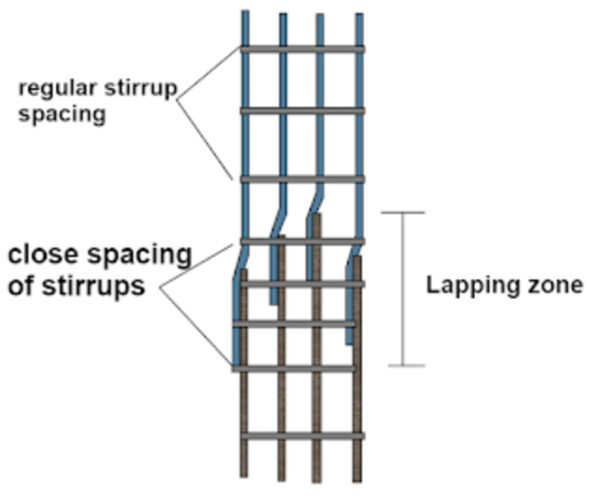Columns in construction play a vital role in supporting structures and transferring loads from the upper levels to the foundation.
Each element plays an important role and is designed for a specific purpose like transferring the loads from slab to beam, beam to column, column to soil.
One important element among them are columns. They are important components of construction that support the load of a building and enhance its appearance and performance.
In civil engineering construction the whole structure is basically divided into a number of structural elements such as beams , columns, footings, slabs, walls, floors etc.

What are columns in construction?
Columns are essential components in the construction of buildings, bridges, and other structures. They are designed to withstand various loads, including dead loads (the weight of the structure itself) and live loads (the weight of occupants, furniture, and other movable elements).
Columns or otherwise called as pillars are the vertical structural members that span between the substructure and the super structure. They are also called compression members as they are responsible for transferring all the axial compressive loads from the structure to the foundations.
Just like bones in the human body which give strength and transfer the entire load of the body to the legs . Similarly the column in building construction gives strength to the structure and transfers the load to the foundations.
Objectives of columns
Columns are essential elements of stability and safety of any construction project, so they must be designed and installed according to the specifications and codes of the building. Following are some important objectives to be satisfied by columns.
- The main objective is to provide structural stability i.e to provide lateral support against wind and seismic forces, helping to ensure that the building is safe and secure.
- Columns must be able to resist various forces, such as compression, tension, bending, shear, and torsion.
- To distribute the load evenly to the foundation.
- They must also be able to withstand environmental factors, such as fire, water, wind, and earthquakes.
- Columns can also have aesthetic and functional purposes in construction. They can create a sense of space and proportion in a building.
- To enhance the architectural design.Columns can also be used to create a specific architectural style or to match the existing style of the building.They can also serve as decorative elements or as part of a facade.
- Columns can also provide space for utilities, such as pipes, wires, or ducts. This is often seen in large buildings such as sports arenas, concert halls, and museums.
Importance of columns in construction
Columns are the most important structural members in building construction.
They play a vital role in safety and durability of any construction, they must be designed and constructed with utmost care and precision taking into account the environmental factors, loads acting, stresses.
A well built column increases the beauty and functionality of the structure.

Functions of column in construction
Support the weight of the structure
They are designed to support the weight of the building or structure above them and transfer it to the foundation below. They are essential for providing structural stability and preventing the building from collapsing.
Provide vertical alignment
They help to provide vertical alignment to the structure and keep it straight. This is important for ensuring that the building is level and doesn’t tilt or lean to one side.
Resist compressive forces
Columns are designed to resist compressive forces, which are forces that push down on the column. This is important for ensuring that the building doesn’t sink or settle over time.
Allow for large open spaces
Columns can be used to support large open spaces, such as in a cathedral or theatre. By placing columns strategically, the weight of the structure can be distributed evenly, allowing for larger open spaces without compromising structural stability.
Architectural design
Columns can also be used for their aesthetic value and to enhance the architectural design of the building. They come in a variety of shapes, sizes, and materials, and can be designed to match the style of the building.
conclusion
Column in building design is crucial for ensuring the safety and stability of the structure. Engineers must consider factors such as the size, shape, and material of the column, as well as the loads it will be subjected to. Column work in building construction involves the proper placement, reinforcement, and connection of columns to other structural elements.
column in construction is a critical aspect of structural engineering that ensures the safety, stability, and longevity of buildings and other structures. Understanding the role of columns and their proper design and implementation is essential for civil engineering professionals.







We need pdf notes about columns, beams and slabs , simplified notes thank you
Thanks for your request. We are preparing downloadable items as part of subscription. Meanwhile, you can go through the concrete technology category to get design and details about columns.
What kind of PDF notes do you require about columns, beams and slabs.
please let us know your requirements so we can serve you better.